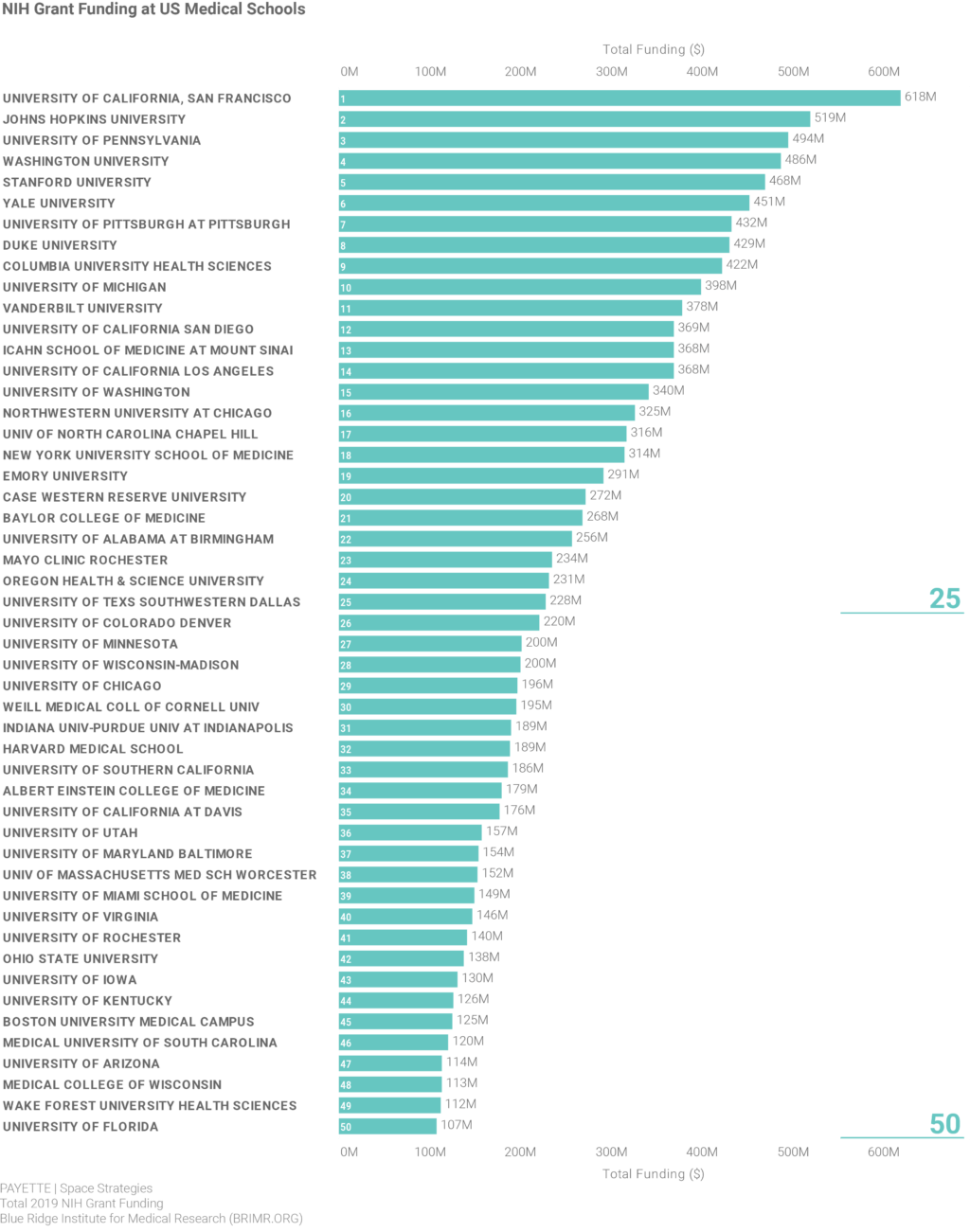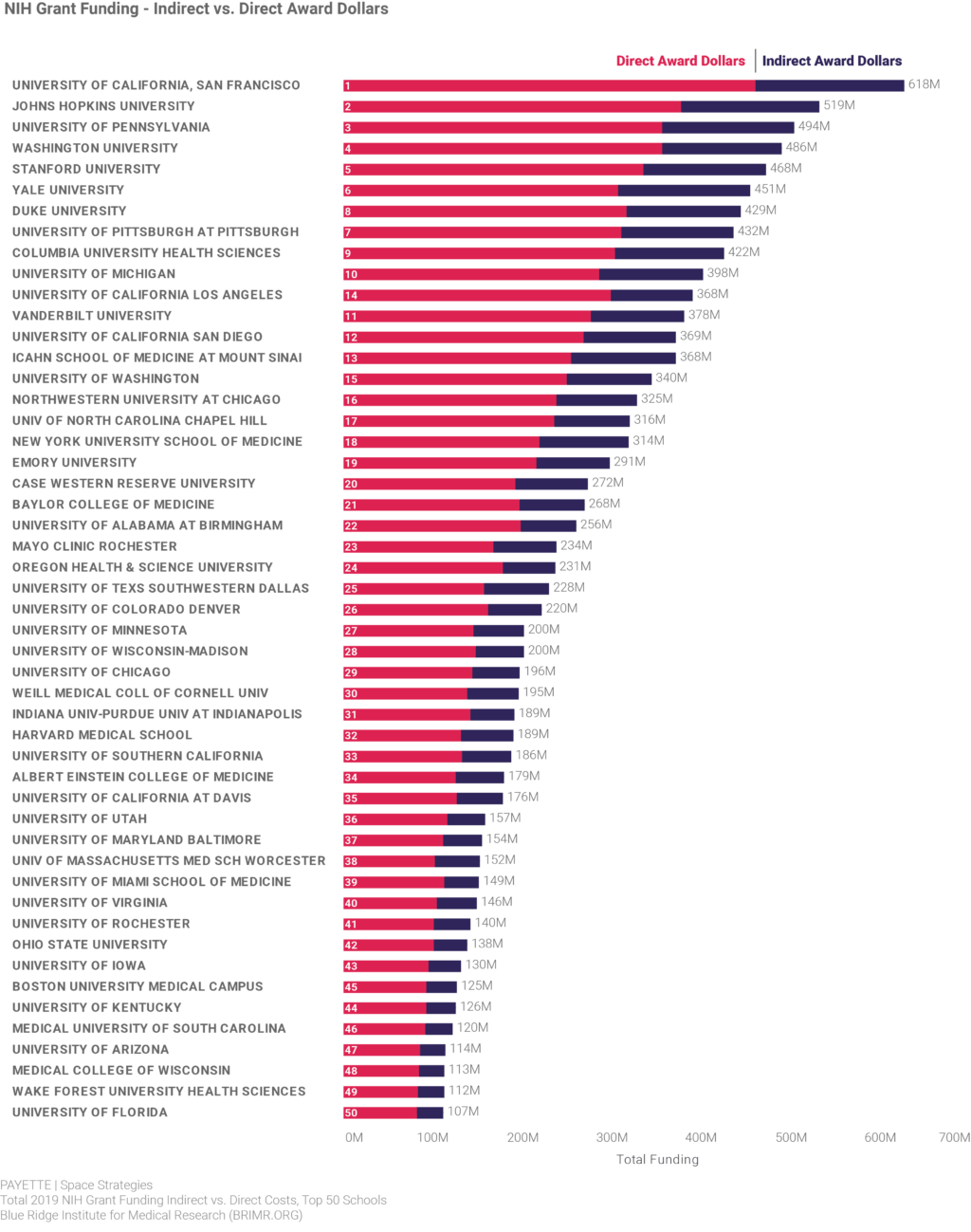Space Strategies is a team of planners, data scientists, and architects passionate about issues at the intersection of space, policy, patient care, research, and learning. This is the first in a series of articles investigating connections between grant funding, institutions, people and space.
Grants dollars from the National Institutes of Health (NIH) fuel innovation in biomedical research nationwide. At PAYETTE, we’re fortunate to work with some of the nation’s leading research institutes and schools of medicine, for whom consistent NIH funding is essential to their strategy for growth and success.
But why should architects care about NIH funding?
How does it inform laboratory space planning?
For one thing, NIH funding comprises the majority of grant dollars received by Schools of Medicine. Grants are consistent, reliable and typically span three to five years. Many schools therefore use funding data to inform decisions about physical space.

The top 50 schools of medicine by their total funding in 2019, prior to the wild fluctuations caused by COVID funding.
We also break-down NIH data to understand what diseases and types of health issues schools or departments are focused on. This enables us to suggest new ways to organize departments and researchers around their scientific collaborations in new buildings or across entire campuses.

NIH funding at Drexel’s College of Medicine
Source: reporter.nih.gov
Secondly, the reality is that research is as much a financial enterprise as it is a scientific one, which brings us to another reason that NIH funding is important. Three words: Indirect Cost Recovery. Every dollar of federal grant money includes compensation for facilities and administrative costs required to keep the lights on and manage their research enterprise.

For this reason, NIH money is essential to universities, especially since non-profits and private funding sources don’t typically pay for indirect costs. In 2019, for example, every dollar of NIH funding included 29 cents for indirect costs and 71 cents for direct costs.

- Direct Costs are expenses related to the work specific to a grant. This includes salaries, lab supplies and equipment, rent, travel costs and stipends.
- Indirect Costs are the costs related to the general operation of an institution. These include the upkeep of facilities, utility costs, health and safety personnel, data storage, and major shared equipment such as core facilities, which can be supported by separate types of grants.Many private funding sources do not compensate for indirect costs.
We help institutions understand the return on investment for both new construction and renovations by equating people to space and funding. At Space Strategies, we believe that high performance design can return dividends when space planning and financial savvy are combined. In our next article, we will dig into various types of NIH grants and metrics related to individual researchers. If you have any questions about the analysis presented here, please reach out!



